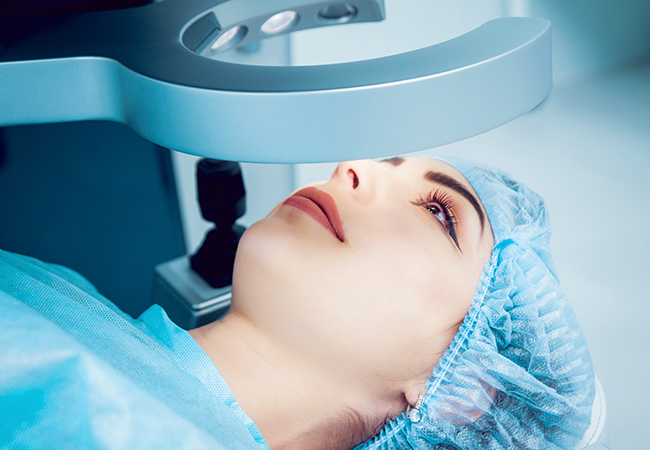Presentation
Myopia is a vision disorder. The perception of an object is blurred at a distance and sharp at close range. In a healthy eye, the image of a distant object is formed on the retina. The myopic eye, on the other hand, is too long and/or the cornea is too curved and forms the image in front of the retina. As a result, objects in the distance are out of focus.

Myopia operation
Myopiasurgery is intended for people with myopia who no longer want to wear glasses or contact lenses. The most commonly used techniques are laser and corneal resurfacing (LASIK, PKR).
SMILE consists of removing a pre-cut lenticule en bloc with a laser. Both eyes are operated on the same day, in a painless way because of local anaesthesia by instillation of anaesthetic eye drops, in ambulatory.
PRK (refractive photokeratectomy) is the oldest technique. The cornea is stripped of its epithelium. The laser is then applied. Pain and bandages are to be expected for just a few days.
Lasik is the most widely used laser operation to correct myopic eyes. This technique, performed in a few minutes, is very effective and completely painless.
Trans-PRK or transepithelial photorefractive keratectomy is a non-contact laser technology. Unlike the conventional method, Trans-PRK requires no contact between the eye and any instrument. The Excimer laser removes the epithelium without suction or scalpel and without the application of alcohol. We only use this technique when Lasik is not an option.
Furthermore, in cases of very high myopia, refractive lens surgery is the best solution. This involves replacing the lens with a lens inside the eye called an intraocular implant.
The vision improves rapidly, one can work again the next day after LASIK, and from one week after PRK. Complications are exceptional, when the indication is well established and the technique well executed. Astigmatism and myopia are operated on at the same time.
Presbyopia is not a contraindication to myopia surgery.
Presbyopia surgery

Presbyopia is caused by the loss of elasticity of the crystalline lens (the lens inside the eye that bulges out to make a magnifying glass to allow us to see up close and reduces its bulge when we look away. The lens thus allows us to see clearly, both near and far). By losing elasticity, the lens can no longer contract and therefore loses its magnifying effect for close-up vision. As a result, the patient is forced to move objects away from his or her eyes in order to see them clearly.
For the time being, presbyopia surgery is only possible in certain cases, after a personalised pre-operative assessment.

